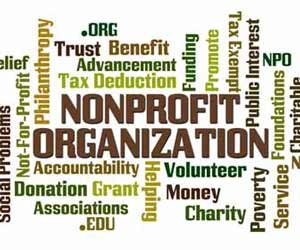How to Become a 501c3
It is in the best interest of most organizations that are looking to collect charitable contributions to apply for nonprofit tax exempt status under the IRS 501 c 3.

Having this status means that you will not have to pay income taxes on the money that you receive. It also means that you will have to submit your taxes for review by the IRS every year (through Form 990). The IRS then makes sure that you are using any funding that you are receiving for its intended charitable purpose. Most major donors (especially private foundations and corporations) will not consider making a gift to an organization that is not recognized by the IRS as a not-for-profit organization. Below are some commonly asked questions about 501 c 3 status.
If all the laws and codes interest you, then consider jobs with the IRS discussed in our Government Employment section.
How can my organization apply for 501 c 3 status?
Before you being the process of filing for 501 c 3 nonprofit status, it is important to note that the process can take weeks, even months, to complete. The sooner you begin the paperwork, the better. If this is your first time filing tax documents, you may want to enlist the help of a legal professional. But if you are comfortable moving forward alone, here are the basic steps that you should take.
- Incorporation: Your organization must be incorporated to receive 501 c 3 status. This means that you will have to find a board of directors and create organization bylaws according to the guidelines of the state in which you wish to incorporate. Your incorporation state doesn’t really matter – you may choose any state in the union, although most organizations find it easier to incorporate within the state where they have their base of operations.
- Form 1023: Find and download for 1023 from the IRS website and fill it out. This is your 501 c 3 application form. The form is long and complicated – take your time and fill it out carefully. The main information that the form is looking for is: The purpose of your organization, organizational structure, affirmation that your organization was formed for charitable purposes, financial data, information about officers and staff members. The form will also ask for a clause that states that if your organization dissolves, all assets will then be donated to another 501 c 3 nonprofit organization.
- IRS approval: If you have filled out your Form 1023 and supplied all of the requisite information, the IRS will contact you will a letter granting your organization nonprofit status. Keep this letter in a safe place! If there is an issue with your application, the IRS will contact you requesting more information or will ask you to resubmit the application.
Does 501 c 3 status mean that I don’t have to file taxes?
No. Each year nonprofit organizations have to file a Form 990, which reports their income and expenses, along with information about the organization and its officers. Form 990s are available on the IRS website. They have changed recently to make them easier to fill out (especially for first-time organizations filing their taxes for the first time), and have restructured the way that information is reported about your nonprofit organizations. For more information, please visit the IRS website.
The Chamber of Commerce also has a fully-featured tax guide for charities/non-profits at www.chamberofcommerce.org/tax-information-guide-for-charities-and-non-profits/
Is there more than one type of tax-exempt status?
Yes. 501 c 3 is the most common type of tax-exempt status, but there are actually 28 types of 501 c statuses under the IRS. 501 c 3 is only applicable to charitable, religious, educational and scientific organizations. 501 c 4 status (for example) is reserved for social welfare associations and employee associations.
It is important to note that within 501 c 3 status, organizations are further placed into categories (taxonomies) according to the National Taxonomy of Exempt Entities (NTEE). The list of taxonomies is available at the National Center for Charitable Statistics website.
What are the types of 501 statuses?
A complete list of 501 c topics is available at the IRS website.


 Teach English in Asia
Teach English in Asia  Cruise Ship Jobs
Cruise Ship Jobs  Alaska Fishing Industry Jobs
Alaska Fishing Industry Jobs  Sharing Economy / Gig Economy
Sharing Economy / Gig Economy